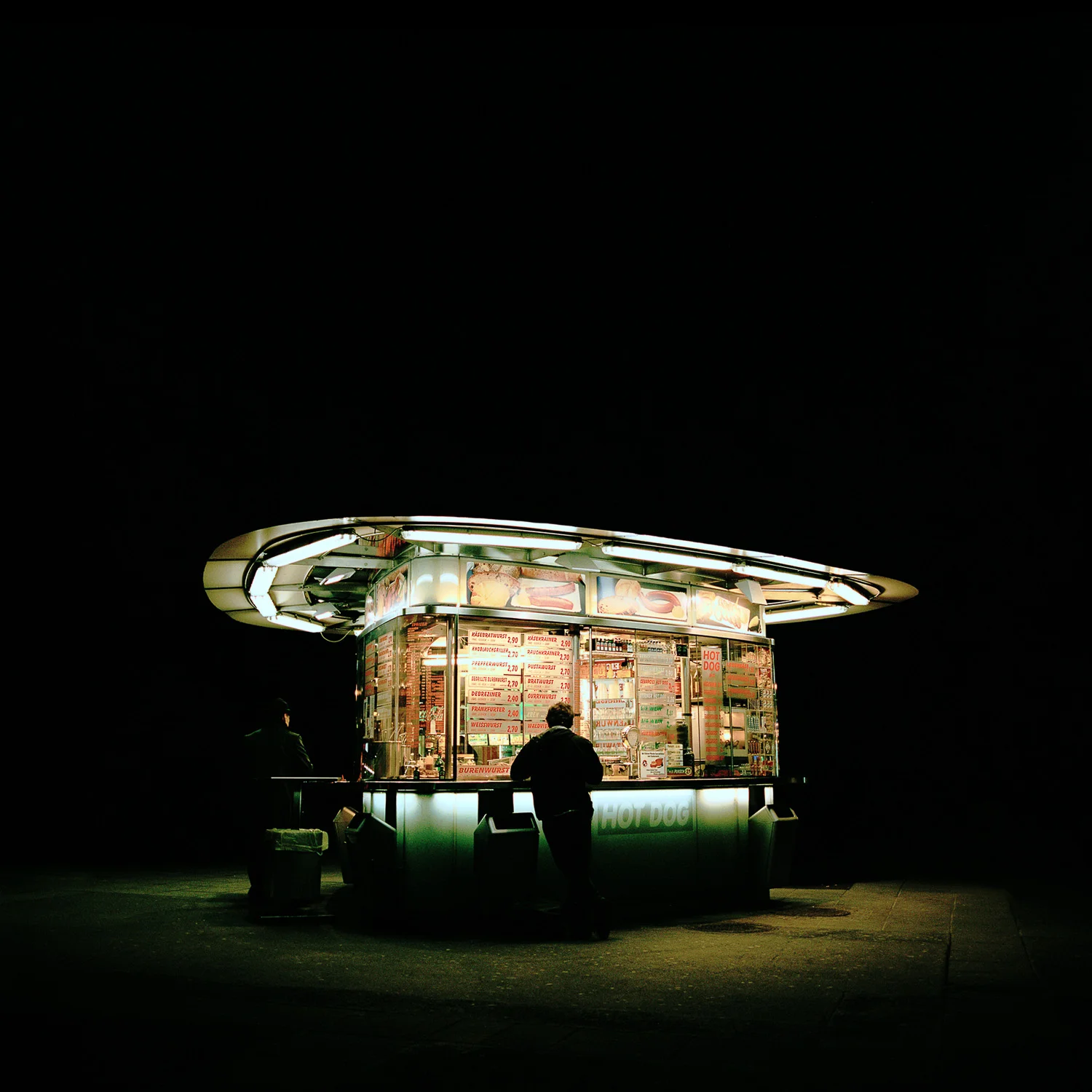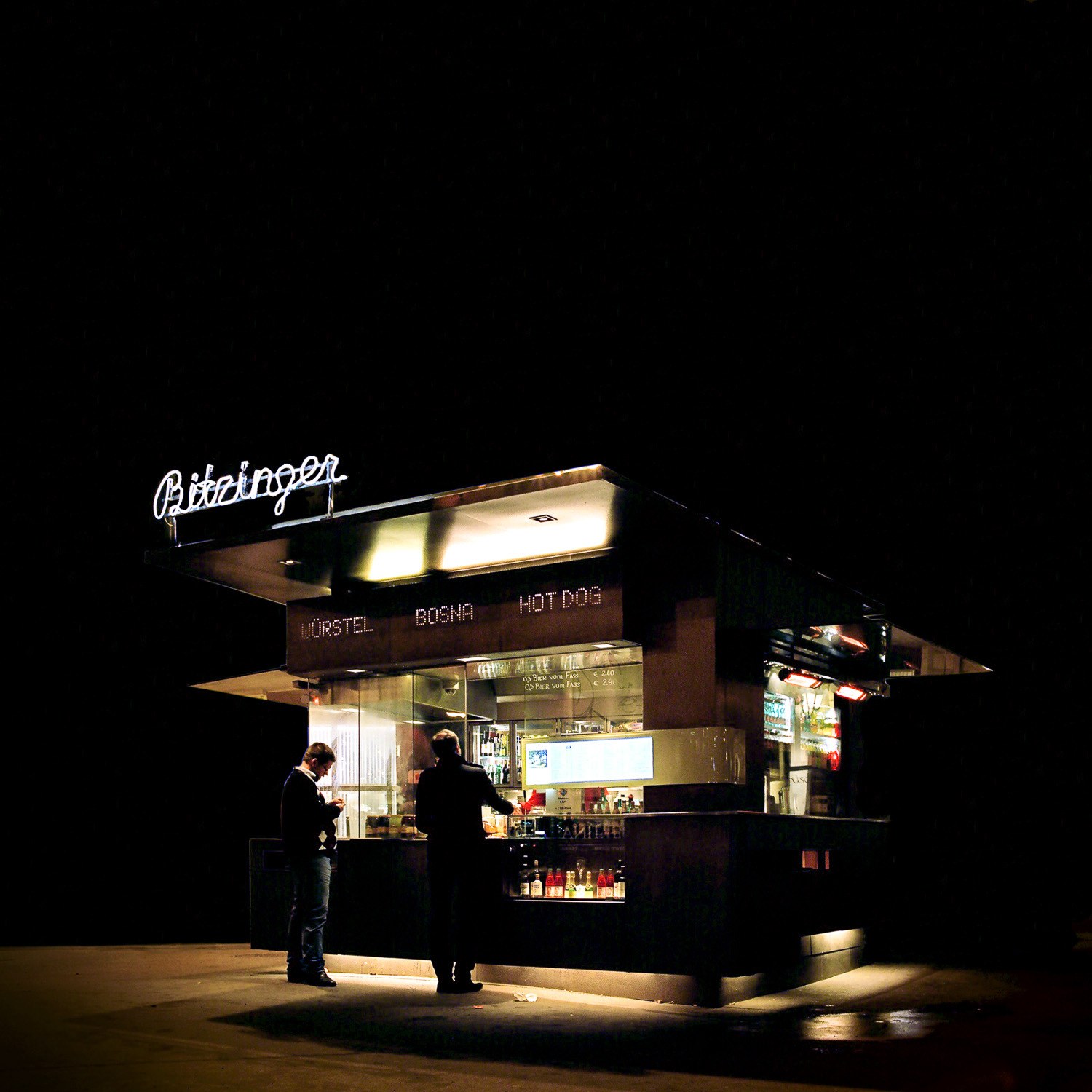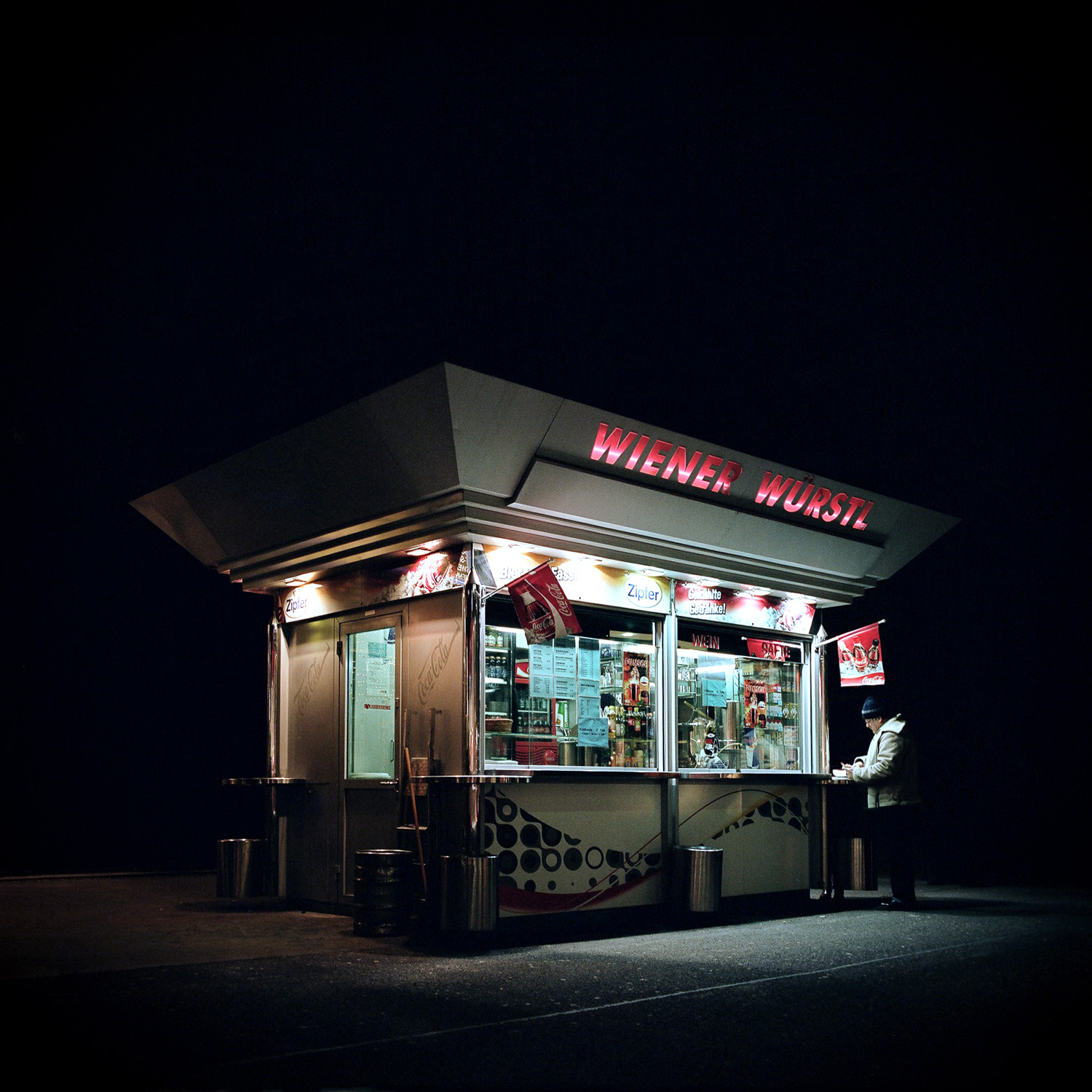Eiterquellen
— Monumental diners interpreted
EITERQUELLEN
is a free work on Viennese Wurstel Diners and the little different Viennese fast-food culture.
Most of the time these diners are isolated islands of food supply in an ancient surrounding with a dash of cultural heritage. Isolated both in the sense of appearance as well as in the sense of resisting against global operating fast-food chains. But the 'improper' and modern their architecture may appear, the much heritage there is behind the scenes.
Viennese wurstel diners have been introduced during the Austro-Hungarian "K.u.K." Monarchy around 1870 to provide a safe income for wounded war veterans. Since then they became an essential part of the urban culture not by only supplying snacks but also being a meeting spot of the distinctive Viennese working class and the high society, too.
On top, the sub-urban Viennese tongue is a raw one and gets celebrated at exactly these places - a main reason I've chosen the title 'Eiterquellen' ('Pus Springs') for this project. The Viennese tongue has found some questionable synonyms for the food supplied at diners, like 'Eitrige' ('pus-filled') which describes a 'Kaesekrainer' sausage which is filled with cheese and when put on the grill the cheese melts and oozes out. With some imagination this can look like pus. Preferably the 'Kaesekrainer' is served with barf (mustard) and a hump (bread roll)...
Of course these ancient Viennese diners had to evolve to catch up with international fast-food chains, Kebap diners and Asian snack bars. They've refurbished appearance with contemporary architecture which is by the way not unfamiliar with the style of diners of the 60ies in the US. But they serve the same snacks they used to serve almost 150 years ago.
So this is how these wonderful, sometimes quirky places emerged which wrangle with the history though they're part of the same.
























